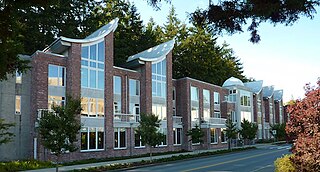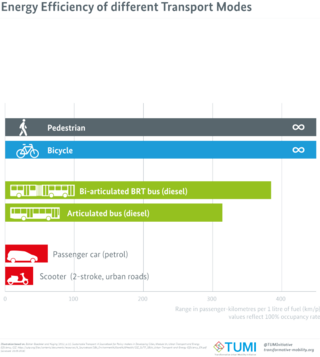
A green roof or living roof is a roof of a building that is partially or completely covered with vegetation and a growing medium, planted over a waterproofing membrane. It may also include additional layers such as a root barrier and drainage and irrigation systems. Container gardens on roofs, where plants are maintained in pots, are not generally considered to be true green roofs, although this is debated. Rooftop ponds are another form of green roofs which are used to treat greywater. Vegetation, soil, drainage layer, roof barrier and irrigation system constitute green roof.

Green building refers to both a structure and the application of processes that are environmentally responsible and resource-efficient throughout a building's life-cycle: from planning to design, construction, operation, maintenance, renovation, and demolition. This requires close cooperation of the contractor, the architects, the engineers, and the client at all project stages. The Green Building practice expands and complements the classical building design concerns of economy, utility, durability, and comfort. Green building also refers to saving resources to the maximum extent, including energy saving, land saving, water saving, material saving, etc., during the whole life cycle of the building, protecting the environment and reducing pollution, providing people with healthy, comfortable and efficient use of space, and being in harmony with nature Buildings that live in harmony. Green building technology focuses on low consumption, high efficiency, economy, environmental protection, integration and optimization.’

Environmental technology (envirotech) or green technology (greentech), also known as clean technology (cleantech), is the application of one or more of environmental science, green chemistry, environmental monitoring and electronic devices to monitor, model and conserve the natural environment and resources, and to curb the negative impacts of human involvement. The term is also used to describe sustainable energy generation technologies such as photovoltaics, wind turbines, etc. Sustainable development is the core of environmental technologies. The term environmental technologies is also used to describe a class of electronic devices that can promote sustainable management of resources.

Reflective surfaces or ground-based albedo modification (GBAM) is a solar radiation management method of enhancing the Earth's albedo. The IPCC described this method as "whitening roofs, changes in land use management, change of albedo at a larger scale ."
Rodney Jon (Rod) Welford is an Australian former politician from Queensland. He served as a Labor Party Member of Parliament in the Legislative Assembly of Queensland from 1989 to 2009.

A Zero Energy Building (ZEB), also known as a Net Zero Energy (NZE) building, is a building with net zero energy consumption, meaning the total amount of energy used by the building on an annual basis is equal to the amount of renewable energy created on the site or in other definitions by renewable energy sources offsite, using technology such as heat pumps, high efficiency windows and insulation, and solar panels.

The Industrial Technology Research Institute is a technology research and development institution in Taiwan.

A green-collar worker is a worker who is employed in an environmental sectors of the economy. Environmental green-collar workers satisfy the demand for green development. Generally, they implement environmentally conscious design, policy, and technology to improve conservation and sustainability. Formal environmental regulations as well as informal social expectations are pushing many firms to seek professionals with expertise with environmental, energy efficiency, and clean renewable energy issues. They often seek to make their output more sustainable, and thus more favorable to public opinion, governmental regulation, and the Earth's ecology.

Council House 2 (also known as CH2), is an office building located at 240 Little Collins Street in the Melbourne central business district, Australia. It is used by the City of Melbourne council, and in April 2005, became the first purpose-built office building in Australia to achieve a maximum Six Green Star rating, certified by the Green Building Council of Australia. CH2 officially opened in August 2006.
Ecological design or ecodesign is an approach to designing products and services that gives special consideration to the environmental impacts of a product over its entire lifecycle. Sim Van der Ryn and Stuart Cowan define it as "any form of design that minimizes environmentally destructive impacts by integrating itself with living processes." Ecological design can also be defined as the process of integrating environmental considerations into design and development with the aim of reducing environmental impacts of products through their life cycle.
Green building on college campuses is the purposeful construction of buildings on college campuses that decreases resource usage in both the building process and also the future use of the building. The goal is to reduce CO2 emissions, energy use, and water use, while creating an atmosphere where students can be healthy and learn. Universities across the country are building to green standards set forth by the USGBC, United States Green Building Council. The USGBC is a non-profit organization that promotes sustainability in how buildings are designed and built. This organization created the Leadership in Energy and Environmental Design (LEED) rating system, which is a certification process that provides verification that a building is environmentally sustainable. In the United States, commercial and residential buildings account for 70 percent of the electricity use and over 38 percent of CO2 emissions. Because of these huge statistics regarding resource usage and emissions, the room for more efficient building practices is dramatic. Since college campuses are where the world's future leaders are being taught, colleges are choosing to construct new buildings to green standards in order to promote environmental stewardship to their students. Colleges across the United States have taken leading roles in the construction of green building in order to reduce resource consumption, save money in the long run, and instill the importance on environmental sustainability on their students. It is a better way to motivate new generation to live a sustainable life.
Environmentally sustainable design is the philosophy of designing physical objects, the built environment, and services to comply with the principles of ecological sustainability and also aimed at improving the health and comfortability of occupants in a building. Sustainable design seeks to reduce negative impacts on the environment, the health and well-being of building occupants, thereby improving building performance. The basic objectives of sustainability are to reduce the consumption of non-renewable resources, minimize waste, and create healthy, productive environments.

The C. K. Choi Building is a building known for its sustainable design features. It is the University of British Columbia's "flagship environmental building" in what it calls its 'living laboratory', the campus used to showcase "innovative approaches to conserving energy, water and materials, while striving to make positive impacts on the environment." Located in the northwest quadrant of the UBC campus, the building is named after Dr. Cheung-Kok Choi, a businessman and philanthropist in China, Hong Kong and Canada, and a major donor to UBC. The C.K. Choi Building was purpose-built as a university office building to house UBC's Institute of Asian Research's five research centres. These focus on China, Japan, Korea, Southeast Asia, and India and South Asia. The "daringly innovative architecture" integrates cultural expression, interior and exterior architectural presence, together with environmental features and functions. The five identical curved roof forms reflect the institute's Asian focus, providing an identifiable focus for each research centre without giving predominance to one culture or centre over another, and provide natural light and natural ventilation to interior spaces.
A sustainability organization is (1) an organized group of people that aims to advance sustainability and/or (2) those actions of organizing something sustainably. Unlike many business organizations, sustainability organizations are not limited to implementing sustainability strategies which provide them with economic and cultural benefits attained through environmental responsibility. For sustainability organizations, sustainability can also be an end in itself without further justifications.
ASU Campus Metabolism is a website managed by Arizona State University, demonstrating Energy monitoring and targeting through use of real-time and historic energy use data of buildings on the campus in Tempe, Arizona. The site displays data from an Energy Information System in order to support education, research, operations and outreach regarding sustainability of operations on the ASU Tempe campus. The site is part of a plan for the campus to be carbon-neutral by 2025.

Sustainable urbanism is both the study of cities and the practices to build them (urbanism), that focuses on promoting their long term viability by reducing consumption, waste and harmful impacts on people and place while enhancing the overall well-being of both people and place. Well-being includes the physical, ecological, economic, social, health and equity factors, among others, that comprise cities and their populations. In the context of contemporary urbanism, the term cities refers to several scales of human settlements from towns to cities, metropolises and mega-city regions that includes their peripheries / suburbs / exurbs. Sustainability is a key component to professional practice in urban planning and urban design along with its related disciplines landscape architecture, architecture, and civil and environmental engineering. Green urbanism and ecological urbanism are other common terms that are similar to sustainable urbanism, however they can be construed as focusing more on the natural environment and ecosystems and less on economic and social aspects. Also related to sustainable urbanism are the practices of land development called Sustainable development, which is the process of physically constructing sustainable buildings, as well as the practices of urban planning called smart growth or growth management, which denote the processes of planning, designing, and building urban settlements that are more sustainable than if they were not planned according to sustainability criteria and principles.
Sustainable refurbishment describes working on existing buildings to improve their environmental performance using sustainable methods and materials. A refurbishment or retrofit is defined as: “any work to a building over and above maintenance to change its capacity, function or performance’ in other words, any intervention to adjust, reuse, or upgrade a building to suit new conditions or requirements” [7]. Refurbishment can be done to a part of a building, an entire building, or a campus [5]. Sustainable refurbishment takes this a step further to modify the existing building to perform better in terms of its environmental impact and its occupants' environment.

The Wisconsin Energy Institute serves as the collaborative home of energy research and education for the University of Wisconsin-Madison campus and greater Midwestern region, and houses the Great Lakes Bioenergy Research Center, along with research space for the Nelson Institute for Environmental Studies.
The INTEGER Millennium House is a demonstration house in Watford, England that opened to the public in 1998. It was renamed The Smart Home after being refurbished in 2013. The house was originally intended to showcase innovations in design and construction, building intelligence, and environmental performance. The INTEGER design included many innovative features, including environmental technology such as a green roof and a grey water recycling system, home automation that included a building management system and an intelligent security system, and innovative technical systems such as under-floor trench heating. In 2013, the house was refurbished and retrofitted with a variety of new and upgraded features, including a building-integrated photovoltaic (BIPV) array, which altogether halved its carbon emissions and increased its energy efficiency by 50%. Since its creation, the house has garnered numerous awards, appeared on Tomorrow's World on BBC Television, hosted thousands of visitors, and influenced mainstream construction.
The Queen's Award for Enterprise: Sustainable Development is awarded each year on 21 April by Queen Elizabeth II, along with the other two Queen's Awards for Enterprise categories.










